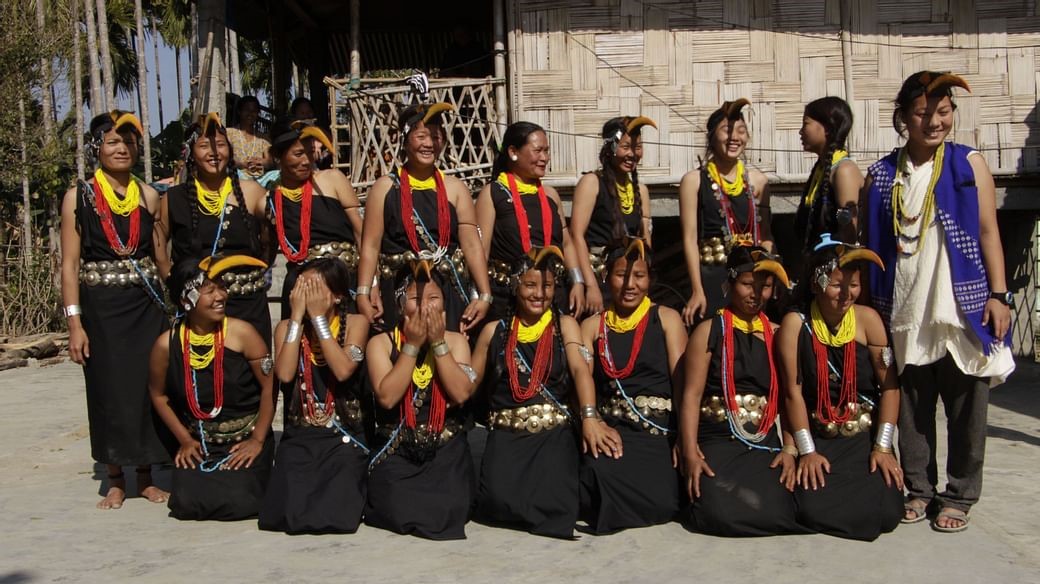Description

Disclaimer: Copyright infringement not intended.
Context
The 9th edition of the Pakke Paga Hornbill Festival (PPHF), a state festival of Arunachal Pradesh, will take place at Seijosa in the Pakke Kessang district from January 18-20, 2024.
Details
Inaugural Year and Objectives
- First Edition: The inaugural Pakke Paga Hornbill Festival was held in 2015.
- Nyishi Tribe Recognition: The festival aimed to recognize the significant role played by the Nyishi tribal group in conserving hornbills within the Pakke Tiger Reserve (PTR).
- Alternative Income Sources: An objective was to explore and establish alternative sources of income for the region, moving away from practices like hunting and logging.
- Awareness Creation: The festival sought to create awareness across India about the natural wonders of the Pakke Tiger Reserve and its surrounding areas.
2024 Theme
- Domutoh Domutoh, Paga hum Domutoh: This year's festival theme translates to 'Let Our Hornbills Remain' in the Nyishi language.
- Preservation Focus: The theme underscores the critical importance of preserving these iconic birds, highlighting the need for conservation efforts.
Pakke Tiger Reserve
Location and History:
- Geographical Location: Pakke Tiger Reserve is located in the East Kameng district of Arunachal Pradesh in Northeast India.
- Former Name: Initially known as Pakhui Tiger Reserve, it was renamed in April 2001 by the Governor of Arunachal Pradesh.
- Recognition: The reserve is a Project Tiger site, spanning an area of 862 km², protected by the Department of Environment and Forest of Arunachal Pradesh.
Flora:
- Habitat Types: Lowland semi-evergreen, evergreen forest, and Eastern Himalayan broadleaf forests.
- Woody Species: 343 woody species recorded, with a high representation of species from the Euphorbiaceae and Lauraceae families.
- Orchids: About 600 species of orchids reported from Arunachal Pradesh, including orchid species in Pakhui Wildlife Sanctuary.
- Vegetation Types: Assam Valley tropical semi-evergreen forest, tropical semi-evergreen forests, and subtropical broadleaved forests.
Fauna:
- Mammals: Over 40 mammal species, including Bengal tiger, Indian leopard, clouded leopard, Asiatic jackal, and wild dog.
- Birds: At least 296 bird species recorded, including globally endangered white-winged wood duck, ibisbill, and hornbills.
- Butterflies: Estimated to host at least 500 butterfly species out of the over 1500 found in India.
- Reptiles and Amphibians: 36 reptile species and 30 amphibian species reported, including the Assam roofed turtle and king cobra.
Conservation Initiatives:
- Nyishi Community Involvement: The Nyishi community plays a crucial role in wildlife protection, engaging in conservation efforts and enforcing customary laws.
- Awards and Recognition: The Ghora Aabhe Society, formed in 2006, has received awards and media recognition for its conservation efforts.

Nyishi Community of Arunachal Pradesh
Demographics and Language:
- Largest Ethnic Group: The Nyishi community is the largest ethnic group in Arunachal Pradesh, with a population of around 300,000, making them the most populous tribe in the state.
- Language: The Nyishi language belongs to the Sino-Tibetan family, although its origin is disputed.
Social Structure and Practices:
- Prevalent Practice: Polygyny is prevalent among the Nyishi.
- Social and Economic Significance: It signifies one's social status and economic stability. It proves advantageous during hard times, such as clan wars or social activities.
- Diminishing Practice: The practice is diminishing with modernization and the spread of Christianity.
- Descent: The Nyishi trace their descent patrilineally.
- Clans: The community is divided into several clans.
Etymology:
- Meaning: In Nyishi, "Nyi" refers to "a human," and "shi" denotes "highland."
Distribution:
- Geographic Spread: The Nyishi community is spread across eight districts of Arunachal Pradesh.
- Concentration: The Kurung Kumey and Kra Daadi districts have the largest concentration of Nyishi population.
- Outside Arunachal Pradesh: Nyishis also live in the Sonitpur and North Lakhimpur districts of Assam.
Economy and Livelihood:
- Jhum Cultivation: Nyishi are agriculturalists practicing jhum, a form of shifting cultivation.
- Principal Crops: Paddy (rice), maize, cucumber, ginger, yams, millet, pumpkin, beans, and various leafy vegetables.
- Rice as Staple Food: Rice is the staple food, supplemented by fish, meat, and edible tubers.
Traditional Economic System:
- Barter System: Before the arrival of a Western market economic system, Nyishi used a barter system.
- Reciprocity: They valued generalized and balanced reciprocity in their economic system.
Attire and Ornamentation:
- Hair: Traditionally, plaited hair tied neatly with a brass skewer passing horizontally through it.
- Cane Rings: Worn around the waist, arms, and legs.
- Headgear: Men wore a cane helmet with the beak of the great Indian hornbill, now often made of cane due to wildlife protection laws.
- Men: Sleeveless shirts made from thick cotton cloth, adorned with beads for decoration. Carried machetes, knives, spears, large swords, bows, and arrows during war.
- Women: Sleeveless mantle, ribbon at the waist, girdle with metal disks, beads, and cane garters. Ornaments include bead necklaces, brass chains, metal bells, earrings, and bracelets.
Religion:
- Ancestral Commemoration: Nyokum is the festival celebrated by the Nyishi people, commemorating their ancestors.
- Introduction of Christianity: Christian missionaries began operating in the 1950s, and by 2011, many Nyishi people had embraced Christianity (31%). Hinduism is followed by 29%, and some still adhere to the ancient indigenous Donyi-Poloism.

Conservation Efforts:
- Traditional Attire Impact: The Nyishi tradition of wearing cane helmets with hornbill beaks has affected the hornbill population.
- Conservation Organizations: Organizations like the Arunachal Wildlife and Nature Foundation and the Wildlife Trust of India are working to stop hunting and protect hornbills.
- Hornbill Nest Adoption Program (HNAB): Since 2011, a community-led conservation initiative protects hornbill nest trees, turning hunters into protectors.
MUST READ ARTICLES:
https://www.iasgyan.in/daily-current-affairs/indian-grey-hornbill
|
PRACTICE QUESTION
Q. What is the Nyishi community known for in their traditional attire?
a. Wearing helmets with peacock feathers
b. Plaiting their hair and wearing cane helmets with hornbill beaks
c. Wearing turbans with elaborate embroidery
d. Adorning themselves with seashell necklaces
Answer: b
|
















